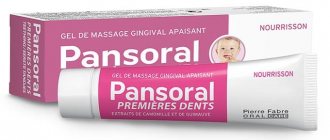Gum treatment
Each tooth is surrounded by soft tissue. They carefully protect its vulnerable spots from bacteria, the mechanical effects of food and acidity surges. The collection of these tissues around each tooth is called the gum.
- The oral cavity is a huge house in which teeth “live”.
- Each tooth has its own “apartment” - the gums.
A person feels better in a well-kept and renovated apartment. Let's make an analogy: teeth need healthy gums.
Let’s figure out what you need to be wary of and what to do if your fears become reality. Let's talk about the health of our gums.
implant surgeon, orthopedist, therapist, work experience: 12 years
The most common mistakes when dealing with symptoms of bleeding gums:
- stop brushing your teeth;
- use antiseptic rinses, gels and toothpastes (without consulting a specialist).
Such actions will only temporarily stop the symptoms, but will not prevent the recurrence of the disease.
Treatment methods for bleeding gums are aimed at stopping and stopping the development of chronic inflammation. Treatment is carried out depending on the severity of inflammation.
Dental
If you experience symptoms of bleeding gums, you should immediately contact your dentist who:
- will carry out diagnostics to identify the cause of inflammation;
- will perform ultrasonic teeth cleaning (for gingivitis) or curettage and treatment of periodontal canals (for periodontitis);
- will prescribe anti-inflammatory therapy, which lasts about 10 days. Treatment includes antiseptic rinsing with chlorhexidine solution and rinses of varying concentrations (depending on the degree of inflammation). Then a special gel is applied to the edge of the dry gum from the front of the dentition;
- will monitor the patient's condition after prescribing a course of treatment. Symptoms disappear within a few weeks and treatment can be stopped.
At home
For mild or moderate inflammation, treatment at home with folk remedies is possible.
A solution of sea salt or soda.
Salt water helps eliminate bleeding, pain, and also restores and strengthens gum tissue. To make a rinse solution, dissolve a tablespoon of salt or a teaspoon of soda in a glass of boiled water. You need to rinse your mouth three times a day for a week.
Herbal decoctions.
Such components can be found in any pharmacy. To rinse, you will need a solution of 2 tablespoons (1 filter bag) of raw material brewed in 500 ml of boiling water. The frequency of rinsing is carried out up to three times a day for a week. Decoctions of flowers (chamomile, calendula, yarrow) disinfect and relieve pain from inflammation and related diseases. A decoction of oak bark helps stop gum bleeding.
Hydrogen peroxide solution (disinfectant to stop bleeding).
This remedy is used to stop bleeding and whiten teeth. To make the solution, dilute one tablespoon of peroxide (concentration no more than 3%) with 200 ml of boiled water. You need to rinse your mouth three times a day for about five minutes for a week (the solution should not be swallowed). This product removes plaque and improves gum health.
There is no inflammation with periodontal disease
When does the so-called periodontal disease, there is no inflammatory process in the gums. The clinical picture of “periodontal disease” differs sharply from periodontitis; it is with periodontitis of the tooth that inflammation occurs.
And injections into the gums, endless restorations of the necks of the gums - this is running in circles. Over time, again all the restoration fillings are chipped, and again these patients come to have these fillings restored again. And this happens endlessly
:
And the diagnosis of “periodontal disease” does not go away. As Desna ran away, she continues to leave. The fillings increase, that is, the teeth increase in size, because the gums sag more and more, and nothing useful happens.
When such a patient gets an appointment with me, unwinding his entire tangle of ordeals during the consultation, it becomes clear that all previously performed gum treatment consists of 3
factors:
- Lost time,
- lost money
- shattered hopes.
The diagnosis was incorrect and the treatment was appropriate for the incorrect diagnosis. What went wrong?
Patients should always go for consultation with such a diagnosis. to the orthodontist
.
Because periodontal disease is an occlusal injury
.
What I see in these patients with signs of periodontal disease is a completely different diagnosis. This is an occlusal injury that can only be corrected by an orthodontist.
Indications and contraindications
Hydrogen peroxide is a cheap, effective remedy for a number of diseases. It is used in therapy:
- periodontal disease;
- stomatitis;
- fungal infections of the mucous membrane and gums;
- plaque on the tongue;
- bad breath.
But keep in mind that peroxide is not a universal remedy for all diseases and it has contraindications. Rinses and compresses cannot be used for:
- advanced deep caries;
- a large number of fillings;
- advanced stages of periodontitis, accompanied by increased bleeding of the gums;
- violations of the integrity of tooth enamel.
Regular use of peroxide does a good job of brightening tooth enamel.
The substance should also not be used by children under 12 years of age. If you doubt the advisability of hydrogen peroxide therapy specifically in your case, we recommend that you first consult with your doctor.
Proportions for treating children of different ages - table
Gargling with a solution of hydrogen peroxide in children involves changing the dosage depending on age. How to dose the 3% solution and Hydroperit tablets in pediatrics, see the table. But in any case, get support from your doctor.
| Child's age | Preparation for dilution | Dosage per 120 ml water |
| Up to 5 years | 3% hydrogen peroxide solution | ½ teaspoon |
| Up to 5 years | Hydroperit (tablets) | 1/4 tablet |
| From 5 to 10 years | 3% hydrogen peroxide solution | 1 teaspoon |
| From 5 to 10 years | Hydroperit (tablets) | 1/2 tablet |
| From 10 to 16 years | 3% hydrogen peroxide solution | 1 dessert spoon |
| From 10 to 16 years | Hydroperit (tablets) | 3/4 tablets |
| From 16 years and adults | 3% hydrogen peroxide solution | 1 tablespoon |
| From 16 years and adults | Hydroperit (tablets) | 1 tablet |
Prevention
Teeth should not be allowed to be “lazy”, so chewing food should be vigorous, and the food itself should be quite tough (include plant foods in the diet). Thus, a natural massage of the gums is carried out, and their cells are renewed faster. You can also massage your gums with circular movements of your thumb, and rinse your mouth with warm water before eating.
Visits to the dentist should be regular, otherwise it is extremely difficult to save teeth in advanced forms of periodontitis.
What to do if you have periodontal disease:
- Maintain oral hygiene
- Identify the true cause of periodontal disease (general or local causes)
- Stop smoking
- Change your diet (exclude sweet foods and include plant foods.)
Diet, oxidative stress and cataracts
Oxidative stress in the body occurs when there is an imbalance of harmful free radicals and antioxidants, which are designed to protect cell membranes from destruction. According to one theory, oxidative processes in the eye affect proteins and fats, which leads to clouding of the lens and deterioration of vision. Fighting free radicals through a healthy diet rich in antioxidants can slow down the disease process.
Harmful molecules enter the body when eating junk food, exposure to environmental pollutants, smoking and radiation. All these aspects can advance the surgical treatment of mature cataracts.
Solution
Medicines with antiseptic and anti-inflammatory properties can quickly relieve gum inflammation at home. In addition to them, you can also use traditional medicine.
Dental gels and rinses
Medicines for gum inflammation can be divided into 4 categories:
- Gels and solutions based on chlorhexidine. The use of these drugs for rinsing or applying to the mucous membrane can eliminate pain and prevent the development of periodontitis.
- Rinse solutions based on furatsilin, chlorophyll, medicinal plants - rotokan, stomatophyte, chlorophyllipt.
- Special dental gels enriched with anti-inflammatory components, such as propolis, will also help relieve gum inflammation.
Dental gels are more effective in the oral cavity. Unlike oil-based ointments, they are better absorbed and stay on the mucous membrane longer.
Here are the most effective gels for relieving inflammation and swelling of the gums.
Cholisal
is a two-component dental gel used for the prevention and treatment of gingivitis, stomatitis and periodontitis. Helps relieve swelling and inflammation of the gums and effectively relieves pain in the problem area. The anesthetic effect of the drug lasts up to 8 hours.
Application:
20 minutes before meals 2-3 times a day.
Metrogyl denta
– antimicrobial gel based on metronidazole and chlorhexidine. It has an anti-inflammatory and powerful antiseptic effect against a wide range of microorganisms - causative agents of gingivitis and periodontitis. Analogs of the drug Dentamet, Asepta.
Application:
2-3 times a day for 7-10 days. The gel is applied to the problem area 30 minutes before meals.
Gengigel
– a preparation based on hyaluronic acid. Restores damaged gum tissue, covers the mucous membrane with a protective film, and increases local immunity of the oral cavity. Prescribed for all diseases of periodontal tissue.
Application:
3-5 days until the symptoms of gum inflammation disappear. Used as part of complex therapy.
For the best effect, before applying the dental gel, brush your teeth, rinse your mouth with mouthwash or saline solution, wipe and dry your gums with a gauze pad.
To prevent inflammatory diseases of the oral cavity, it is recommended to use fluoride-containing toothpastes and rinses.
Traditional medicine
In combination with medications, mouth rinses can reduce pain and swelling:
- Saline or soda solution. To prepare the solution, it is recommended to add a teaspoon of sea or regular table salt (or baking soda) to a glass of warm water. Rinse your mouth with the resulting solution once every few hours.
- Herbal solutions. Decoctions of oak bark, sage, chamomile and mint are ideal for relieving gum inflammation.
How to brew the solution:
2 tablespoons of dried oak bark or other phyto-raw materials are poured into 200 ml of water and the solution is heated in a water bath for 20-30 minutes. After this, the infusion is filtered and boiled water is added to a volume of 200 ml.
How to rinse:
for a few minutes, every hour or two. After rinsing, it is recommended not to eat or drink anything for 30 minutes.
For inflammation of the gums it is also recommended:
- eat flaxseed oil, fish oil and other products containing unsaturated acids;
- use a solution of hydrogen peroxide and essential oils with an antibacterial effect.
It is better to treat gum inflammation with folk remedies after consultation with a doctor and use folk remedies as an auxiliary therapy.
Gel
A good effect in treating periodontal disease at home is provided by the use of gels that increase blood supply to the gums, have an anti-inflammatory effect, and also have a pronounced trophic effect.
Troxevasin
Troxevasin gel has an anti-periodontal effect by strengthening the vascular wall in the capillaries of the gums, improving blood supply to tissues, and enhancing metabolic processes in cells.
Using gentle massage movements, rub the gel into the gums until it is completely absorbed. The procedure should be repeated twice a day after regular hygienic brushing of teeth. The course of treatment is 30 days.
Biodent gel
The gel contains calcium hydroxyapatite, a substance that helps restore tooth tissue and also prevents the deposition of hard plaque. Biodent gel also contains chlorhexidine, a powerful antiseptic that eliminates inflammation in the periodontium. The action of the active components of the gel is complemented by calamus root extract, which improves the trophism of the tissues around the tooth and restores impaired blood circulation.
Biodent gel is recommended to be used twice a day after meals and mechanical brushing of teeth. The drug is applied to the teeth and gums with massaging movements using a toothbrush with soft bristles for 5-7 minutes. There is no need to rinse your mouth after the procedure. You should also refrain from eating, drinking and smoking for 30 minutes. Courses of treatment lasting 2-3 weeks are carried out regularly, with breaks between them of 3-4 weeks.
Elugel
The active ingredient of the drug is chlorhexidine. It has an antimicrobial effect, relieves inflammation of the gums and tissues surrounding the tooth.
The gel is applied in a thin layer to the affected gums 3-4 times a day. The duration of therapy depends on the severity of periodontal disease and averages 2 weeks.
Elgifluor
Elgifluor teeth cleaning gel contains fluorinol and chlorhexidine digluconate, which have a bacteriostatic effect, prevent the deposition of tartar and suppress inflammation in the tissues surrounding the teeth.
Elgifluor is applied to a toothbrush and cleanses the surface of the teeth and gums for 3-4 minutes. Repeat the procedure 3 times a day until the signs of the disease completely disappear.
Holisal
Cholisal gel has a powerful anti-inflammatory effect. improves nutrition of periodontal tissues, has an antibacterial effect.
To treat periodontal disease, the gel is injected into the gum pockets or rubbed into the gums twice a day. For adults, 1 cm of the drug is enough. The duration of treatment is individual and depends on the speed of disappearance of the clinical manifestations of the disease.
Indications for rinsing
Some diseases of the mucous membranes of the mouth, gums and teeth can be easily treated with these affordable remedies. And in combination they give an even faster and better effect.
Diseases of the mucous membranes and gums
Rinsing the mouth with baking soda and hydrogen peroxide is indicated for diseases such as:
periodontal disease;
- gingivitis;
- stomatitis;
- periodontitis;
- other gum diseases.
To carry out the procedure, you can use a solution of both substances or of each of them separately. The result is achieved in both the first and second cases.
Both soda and hydrogen peroxide have disinfecting properties and the ability to kill many germs and bacteria. It is these properties that allow them to quickly cope with diseases of the mucous membranes of the mouth.
Dental diseases
Tested by many generations and proven to be effective in treating teeth, as well as in teeth whitening.
Rinsing teeth with peroxide solution is used to prevent caries and bad breath. It is great for additional cleansing of the oral cavity. Rinsing with soda solution can reduce pain and inflammation in case of dental cyst formation. This rinsing is also recommended for the treatment of caries.
Is it possible to gargle with peroxide?
Only a doctor can correctly diagnose and prescribe treatment. To effectively get rid of tonsillitis, consult a specialist.
According to the instructions for use, peroxide is used as a treatment for the pharynx in acute tonsillitis, gingivitis, stomatitis and other pathologies. For treating mucous membranes, a 0.25% solution of hydrogen peroxide is acceptable1. When rinsing, microbial contamination in the throat decreases and inflammation decreases. Lubricating the mucous membrane of the tonsils with a cotton swab dipped in a solution is also used, which helps to avoid unwanted effects on the rest of the epithelium. On the other hand, peroxide does not act selectively on tissues, that is, it damages, along with bacteria, unchanged tissues of the body, which can delay recovery. With long-term treatment with peroxide, adverse reactions are possible: burns of the mucous membrane; in case of allergic reactions, bronchospasm and laryngospasm may develop; if accidentally swallowed, it has a toxic effect on the gastrointestinal tract; if it enters the bloodstream, it causes hemolysis of red blood cells. As science moves forward, this method of treatment fades into the background. Safer and more effective drugs are appearing.
Up to contents
Other recipes with hydrogen peroxide for periodontal disease
You can add soda or lemon to the peroxide. According to reviews, treating periodontal disease at home with hydrogen peroxide will be much more effective if you combine it with other ingredients.
For example, rinsing with sea salt and peroxide will help relieve inflammation. For this, 1 tsp is enough. Dilute both in a glass of warm water, and then rinse in the usual way. Herbal infusions are also used to treat and prevent gum disease. In this case, infusions of oak bark, sage, St. John's wort and plantain are suitable. Add 5-10 drops of peroxide to the prepared broth and rinse your gums with it. It is necessary to add peroxide to the glass immediately before the procedure, when the herb has infused for the allotted time and the decoction itself becomes less hot.
With soda
Hydrogen peroxide and soda are one of the popular methods for treating periodontal disease at home. To prepare the solution you will need dry peroxide, and it is better to use sea salt. If it is coarsely ground, make sure that it is completely dissolved in the water. Under no circumstances should the prepared solution be swallowed.
Ingredients:
- Dry peroxide - 2 tablets.
- Salt - 1 tsp.
- Water - 200 ml.
How to prepare : Mix all ingredients.
How to use : Rinse your mouth with the resulting solution 3-4 times a day. The duration of the procedure is 5 minutes. The course of therapy is 1 month.
Result : Washes away pathogenic microorganisms from the surface of the gums, stops bleeding, promotes the regeneration of soft tissues.
With lemon
At home, periodontal disease can be treated with hydrogen peroxide, baking soda and lemon. This product can replace toothpaste. You should not do this regularly - for prevention purposes, one procedure every 7-10 days is enough.
Ingredients:
- Baking soda - 3 g.
- Lemon juice - 10 drops.
- 3% hydrogen peroxide - 20 drops.
How to prepare: Add fresh citrus juice to the soda and stir thoroughly. Then add peroxide.
How to use : Brush your teeth with the resulting mixture; no need to rinse your mouth. After the procedure, you should not eat or drink for at least 15 minutes.
Result : Heals gums, promotes periodontal regeneration.
What to remember
- Hydrogen peroxide for periodontal disease is used both externally and internally. When treating with this drug, it is very important to follow the dosage.
- The safest ways to use peroxide are to rinse and wipe the gums with a cotton swab. You can also add a couple of drops of the product to your toothpaste when brushing your teeth.
- Hydrogen peroxide is effective at the initial stage of the disease, as a concomitant therapy or for the prevention of the disease. In advanced cases it will be ineffective.
- Periodontal disease is a serious disease that, if not properly treated, can lead to tooth loss. Therefore, the sooner you see a doctor, the higher the chances of saving your teeth.
Advice one. Whiten your teeth with hydrogen peroxide.
Do not under any circumstances try to restore the whiteness of your smile using this aggressive chemical composition! Yes, statements that compounds based on hydrogen peroxide are actively used in dentistry are indeed justified. But in the doctor's office you will receive a carefully selected dosage of a special mixture, where peroxide does not occupy a primary place. At best, when using peroxide at home, you will not get any results at all. In the worst case, you will burn your oral cavity, damage the enamel, and for a long time you will get rid of the consequences of your own indiscretion.
How to treat and process correctly
Various recipes are used to remove heavy deposits with hydrogen peroxide. Let's look at the most popular ones.
Rinsing
The first is rinsing the mouth with a peroxide solution. To ensure that these procedures do not harm you, prepare the product strictly in accordance with the dosages - 100 ml of clean water and up to 30 ml of 3% peroxide. The solution should not interact with the teeth for too long, so rinse your mouth up to three times a day for no longer than 10 days. Before the procedure, make sure that you have made the solution correctly.
Cleaning gums and teeth
The second method is cleaning with peroxide. It is indicated if the plaque is very strong. A special mixture is made from equal parts of chamomile infusion, tooth powder, and hydrogen peroxide. If there is severe bleeding, brushing your teeth with peroxide is not recommended. To whiten enamel, peroxide is mixed with baking soda in equal proportions, the mixture is usually softened with eucalyptus oil (this is optional). With this paste you need to brush your teeth once - with a regular brush or cotton swab. You can also make a 3% peroxide solution in the same proportions as for rinsing, apply it to a cotton pad and massage the gums.
When using peroxide, do not forget that it affects the acid-water balance, so you should use these recipes (especially for whitening) no more than once a month.
The most gentle way is to add a small amount of peroxide to toothpaste (it is better to use therapeutic and prophylactic agents such as Parodontax or Parodontol) - 1-2 drops per serving of dental product. Rinsing and cleaning should be done after meals. Before rinsing your mouth with peroxide solution, it is recommended to brush your teeth or at least use a regular mouthwash. An internal solution of 3% at the rate of 1 drop per 50 ml is taken only on an empty stomach half an hour before meals. You can also use it after eating, but at least after 2 hours.
Don’t be overzealous with the strips - even the weakest solution, if used more than three times a day, can damage the enamel and cause general intoxication of the body. Also, in the first days of treatment, slight nausea, upset stomach, and skin rashes may occur (normally, these symptoms pass quickly and on their own). 10 days of active therapy, as we already wrote in the previous paragraph, is enough. You can repeat a similar course after 3 days.
Is it possible to cure periodontal disease completely at home?
Is it possible to get rid of periodontal disease in adults forever on your own? Any treatment should begin with a consultation with a doctor; on your own, you can cause even more damage to the periodontium and ultimately lose some teeth. An experienced specialist should tell you how to treat periodontal disease at home. How to get rid of periodontal disease? Correctly chosen treatment tactics and compliance with preventive measures after it will help here. If the patient neglects the rules of hygiene, then no therapy will help. Periodontal disease in its early stages is quite successfully and easily cured. Therapy should be comprehensive, and not just include a course of measures to eliminate external symptoms.
What treatment methods will be most effective?
Treating periodontitis at home with folk remedies is quite simple. Ask the older generation how they got rid of the problem. There are many recipes, among which it is possible to choose an option for any patient.
- Rinse with sea salt. Add a teaspoon of salt to 250 ml of warm water. Rinse your mouth with this solution morning and evening and you will soon forget about periodontal bleeding.
- One of the effective remedies is plantain leaves. To get rid of the disease, you need to chew two leaves three times a day; you should not swallow the juice or leaves.
- An effective remedy in the fight against the disease is apple cider vinegar. The essence is diluted by a third with water and the mouth is rinsed. The duration of the session is at least five minutes. When performing the procedure, you need to draw the maximum amount of liquid into your mouth and, clenching your teeth, push it into the interdental space. The course of therapy is 21 days, manipulations are carried out from two to six times a day.
- Cranberries are an excellent cure for many diseases. The crushed fruits are used for periodontal massage. This procedure will help strengthen the gums, relieve inflammation and increase the body’s overall resistance.
- Gargling with a decoction of pomegranate peels is a fairly effective method of getting rid of periodontitis. Pour a glass of boiling water over the peel of one medium-sized fruit and simmer for about three minutes over low heat, leave until it cools completely.
- Rinse your mouth twice a day and drink half a glass twenty minutes before lunch. Night compresses made from grated beets will help get rid of bleeding. In the evening, before going to bed, grated beets are applied to the affected areas and left until the morning. The course of treatment is a week, the result will be noticeable in two to three days.
- Honey in combs is one of the most useful methods of combating illness. Long-term chewing of honeycombs provides the gums with the necessary complex of vitamins.
- From tablets, vitamins and homeopathic preparations are indicated for periodontal disease. Prescribe complex medications containing B vitamins, retinol acetate, E, folic acid, Ca, Se, zinc, beta-carotene.
Homeopathy is also not worth choosing on your own. In each individual case, a specific remedy is indicated. For periodontal lesions the following is prescribed:
- accidum nitricum 6 - prescribed for loss of gum elasticity and loosening of dental crowns, and also helps eliminate bad breath and bleeding;
- phosphorus 6 – indicated for destruction of the periodontal tissues of the upper jaw; iodium 6 – prescribed for damage to the gums of the lower jaw;
- Natrium carbonicum 6 and silicea 6 are alternately indicated for periodontal disease caused by diabetes mellitus.
Homeopathic medicines cannot be used to treat periodontal disease on their own, but only in combination with other medications and procedures.
Special hygiene products
The most harmless medications in the fight against periodontal disease are special hygiene products. They can be used for both preventive and therapeutic purposes.
Special pastes
Pastes that help treat periodontal disease:
- "Chamomile". Toothpaste for periodontal disease is based exclusively on natural remedies - chamomile and St. John's wort. It has an astringent consistency.
- “Pearl” is a specially developed paste for the treatment of gum diseases, including periodontal disease. It is rich in beneficial vitamins that have a positive effect on the condition of the enamel.
There are three more less effective, but no less useful pastes:
- "Forest";
- "Periodonticide";
- "Auromera";
- "Pomorin".
The method of application is the same for everyone: you need to regularly brush your teeth with this product twice a day.
Brushes
With periodontal disease, it is important to properly care for the oral cavity and select brushes. They must be in the “very soft” category
It is important to brush your teeth only from top to bottom. Horizontal brushing is not of high quality, since all the bacteria will move into the tooth crevices. Toothbrushes should be from the “very soft” category
Toothbrushes should be from the “very soft” category
Rinse aids
It is important to regularly use rinses for preventive purposes against periodontal disease. They help reduce swelling, heal wounds, and also improve blood circulation:
They help reduce swelling, heal wounds, and also improve blood circulation:
- The most effective remedy is Lakalyut. It contains an active antiseptic and astringent components.
- The composition of “President Pro” is supplemented with medicinal herbs, which means that this rinse has a caring effect on gums and tooth enamel.
Dental floss
With severe exacerbation of periodontal disease, the structure of the dentition is damaged. You can also restore it at home.
Dental floss will be an excellent assistant for this purpose. Another function is to cleanse the interdental space from various types of bacteria.










